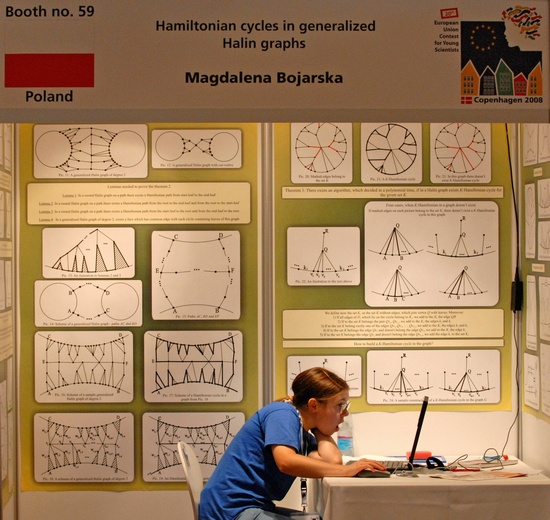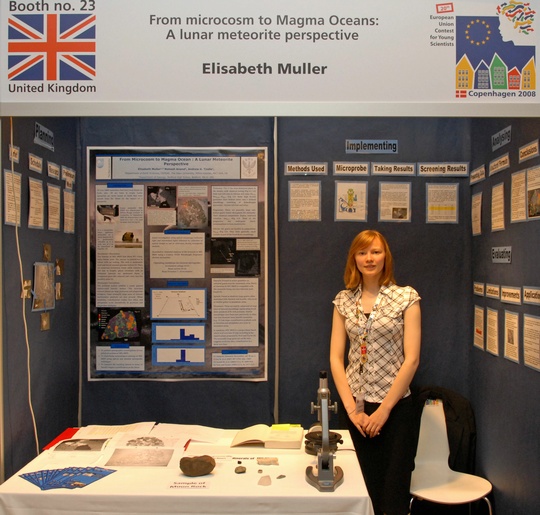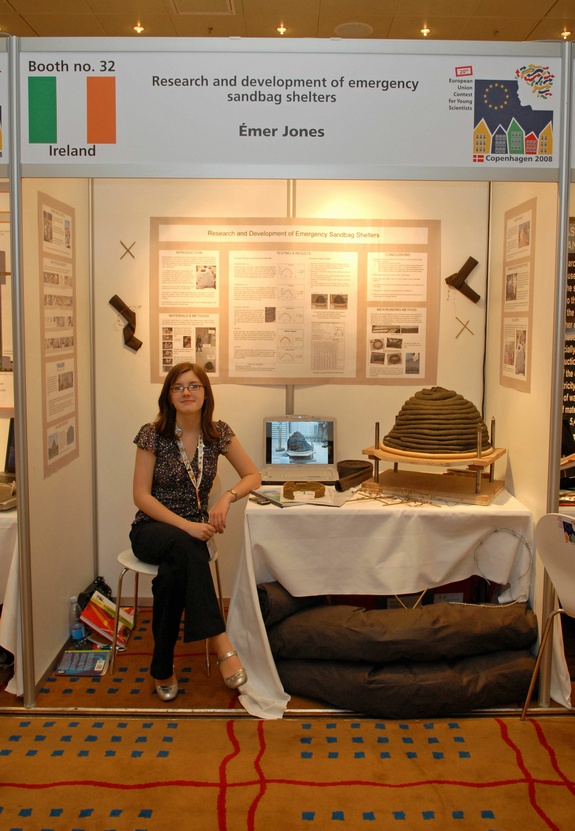We read a lot about kids not being as good in science as we were back in the day. And we read a lot about women being missing from science too. You wouldn't know it by these outstanding young scientists in this year's EU contest for Young Scientists, which was held in Copenhagen, Denmark and rewarded contestants aged 14 - 19 who shared a €46,500 prize pot.
The contestants represented 39 countries across Europe - as well as special guests Brazil, Canada, China, Mexico, New Zealand and the USA - and they presented 87 winning projects from national competitions covering a wide range of scientific disciplines; from engineering and earth sciences to biology, mathematics, chemistry, physics, medicine, computer and social sciences. The standard of entries was consistently high and several past participants have achieved major scientific breakthroughs or set up businesses to market the ideas developed for the Contest.
"The EU Contest for Young Scientists is about supporting the rising stars of tomorrow's European science.” says European Science and Research Commissioner Janez Potocnik. It shows that Europe is a real reservoir of talents which is crucial at a time of global competition for knowledge. It also makes young people enjoy the experience of working together, beyond national borders, in the spirit of the European Research Area we strive to build.

Three projects received first prizes of €7,000 each shared by Magdalena Bojarska from Poland for “Hamiltonian cycles in generalized Halin graphs”, Martin Tkác from Slovakia for “Tilting of bulk materials based on gravitation principle in cargo railway transport” and Elisabeth Muller from the United Kingdom for "From Microcosm to Magma Oceans: A Lunar Meteorite Perspective".
Other prize winners came from Czech Republic, Germany, Ireland, Belarus, France and Latvia. For this 20th anniversary of the EUCYS, the European Commission decided to award a Prize for International Cooperation, for the best project from a Third Country(1) team. In doing so, the Commission underlined the importance of international scientific cooperation in research. The prize, worth €5,000, was won by Pippa Grierson from New Zealand for "Fighting Facial Eczema".
The European Union Contest for Young Scientists is part of the EU's Science in Society programme. Its aim is to encourage young people to pursue their interest in science and embark on scientific careers. This year the winners were announced at Copenhagen's superb 19 th century Circus Building, in the presence of the EU Commissioner for Research, Janez Potocnik, HRH Prince Joachim, Princess Marie and the Danish Minister for Science and Technology, Helge Sander.
(1) Third countries: Brazil, Canada, China, Mexico, New-Zealand, Nigeria and USA.

|
Country |
Project Title |
Contestants |
Prize |
Additional Prize |
|
Main prizes |
||||
|
Poland |
Hamiltonian cycles in generalized Halin graphs |
Magdalena Bojarska |
1st |
London International Youth Forum |
|
Slovakia |
Tilting of bulk materials based on gravitation principle in cargo railway transport |
Martin Tkáč |
1st |
London International Youth Forum |
|
United Kingdom |
From Microcosm to Magma Oceans: A Lunar Meteorite Perspective |
Elisabeth Muller |
1st |
Stockholm International Youth Forum |
|
|
||||
|
New Zealand |
Fighting Facial Eczema |
Pippa Grierson |
|
Prize for International Cooperation |
|
|
||||
|
Czech Republic |
Ecology and Ethology of family Lestidae (Insecta: Odonata) |
Michael Mikát |
2nd |
|
|
Germany |
Polygonal structures on rotating fluid surfaces |
David Wittkowski |
2nd |
|
|
Ireland |
Research and Development of Emergency Sandbag Shelters |
Émer Jones |
2nd |
|
|
|
||||
|
Belarus |
Orbital origamis and stabilizers of stair origamis |
Aliaksandr Minets |
3rd |
|
|
France |
Phaethon, the solar balloon |
Etienne Lalique, Axel Talon |
3rd |
|
|
Latvia |
Monitoring of cardiovascular system |
Eriks Zaharans, Janis Zaharans |
3rd |
|
|
Special Prizes |
||||
|
France |
Physics from breakfast |
Marion Deriot, Hélèna Lacroix |
EFDA ESO |
|
|
Greece |
Developing distributed systems using XO |
Nikolaos Passalis |
CERN |
|
|
Sweden |
The properties of magnetically induced repulsion in simple media |
Gunnar Peng, Karl Larsson |
ESRF ILL |
|
|
Austria |
Sensor for organic residues on aluminium surfaces |
Christoph Wiesinger |
EPO |
|
|
United Kingdom |
F.L.A.S.H – Five Laser Accentuated Security Holder |
Teleri Edwards |
EPO |
|
|
Switzerland |
Simulation, Construction and Optimisation of an Unmanned Aerial Vehicle Based on the Coanda Effect |
Julien Bellot, Robin Oswald, Lucien Segessemann |
EPO |
|
|
Israel |
Computerized System for the Identification and Diagnosis of Pressure Sores |
Inbal Flischer, Alon Ghelber, Roei Yizhak Shachar |
Danish Technological Institute |
|
|
Canada |
Microarray Profiling of Gene Expression in the Normal Aging Brain of Drosophila |
Aaron Hakim |
EMBL |
|
|
USA |
Protecting of Neurons against Injury using Neuro-receptor targeting Nanoparticles |
Jared Goodman, Jonathan Wang |
Lundbeck Special Award |
|
|
Switzerland |
Opening shock of braking parachutes |
Carmen Muller |
ESA |
|
|
Denmark |
Antimcrobial Peptides - the New Weapon against Multiple Drug Resistance? |
Cecilia Engel Thomas |
NOVOZYMES |
|
|
Germany |
When leaves turn red… Chlorophyll fluorescence as a quantitative indicator of plant damage |
Anja Massolle |
International Olympiad |
|
|
Portugal |
Xenobiotic danger: Paracentrotus lividus and the Barrinha de Esmoriz |
Ana Moreira, |
The Climate Prize |
|
|
Poland |
Differences between spatial orientation in male and female of Madagascan hissing cockroach (Gromphadorhina portentosa) |
Pawel Maryniak |
Danish Government Prize |
|
|
Luxembourg |
Heat energy storage using the latent heat of fusion of salt hydrates |
André Wilmes |
Vestas Power Award |
|






Comments